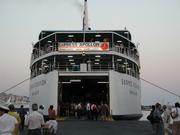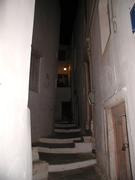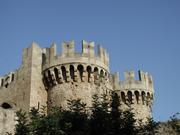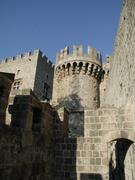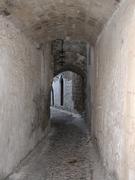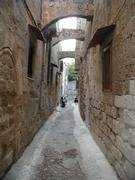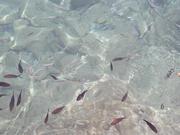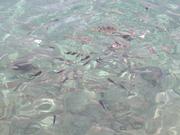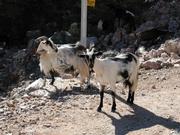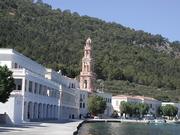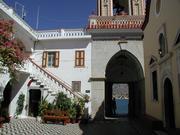There is one town on the island, called Hora, and several pretty villages.
It is also famous for its long white sand beaches. The island was
conquered by the Venetians during the middle ages, who built
a large castle in Hora and several towers in other parts of the
island.
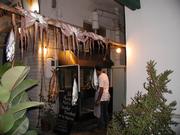
| A seafood restaurant in Hora lets the octopus hang outside to
make it sorfter before grilling.
|
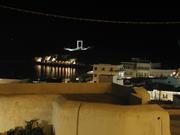
| This is the local landmark known as "the door". It's actually
the remains of the temple of Apollo that stood on the hill near the
port.
|
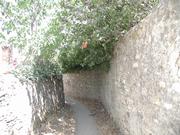
| A shaded street in the village of Chalki.
|
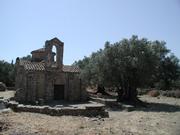
| The street leads to a Byzantine church, standing in a grove
of old olive trees.
|
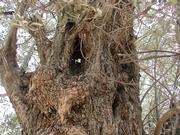
| The trunks of olive trees are gnarled and full of holes.
|

| Villagers in Chalki.
|
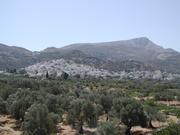
| View of village of Filoti, in the inland mountains of Naxos. On
the foreground is an olive grove.
|

| At the top of this mountain there is a small church. In fact,
there was a church like this pretty much on top of any mountain
in the islands.
|
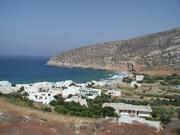
| The seaside villade of Appoloni, on the northern tip of the
island.
|
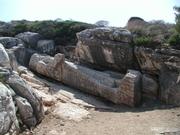
| Appoloni is famous for its Kouros, a giant unifnished Mycenian
statue carved from marble. Lots of people come to see the
Kouros, which preety much is the only tourist attraction in
the northern part of the island.
|

| The mountains in the central part of the island contain large
quantities of marble. It is quarries and is one of the exports of
the island.
|
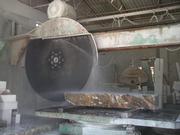
| After quarrying it from the mountain, the marble is sawed into
blocks in the quarry's workshop. In order to control the dust, the
block is continually sprayed with water.
|
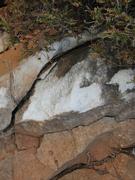
| The Naxos marble is large-grained and is mostly used for
making floor tiles. This is what marble looks like before it
becomes a floor tile.
|
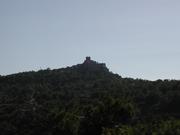
| The castle called Monolithos was built by the Venetians
on a cliff above the ocean.
|
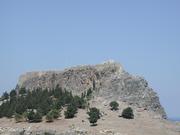
| This is a castle high above the village of Lindos, built on the
side of an old acropolis.
|
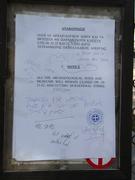
| One of the interesting archaological sites in Rhodes is Kamiros,
where there are ruins of an old Roman city.
Unfortunately, the week we were in Rhodes, all archaeological
sites were closed because of a strike. People were not happy
about that.
|
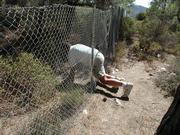
| Undeterred, we found a hole in the fence, climbed through,
hiked over a little hill and got straight to the site. Some of
the other tourists did the same.
|
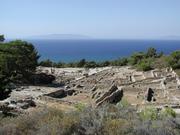
| The view of the site from the hill.
|
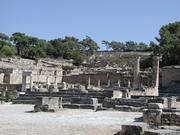
| Walking through the ruins of the Roman city. I think this was
a temple.
|
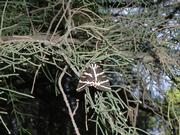
| In the northern-central part of the island is the natural park
called "Valley of Butterflies". It is a shallow canyon in the forest
with a river running through it. This canyon is a nesting ground of
Rhodes's butterflies. The one in this picture has its wings
folded up so you see the color of the underside of the wings. Their
actual color is orange and black.
|
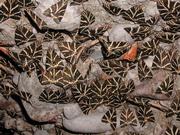
| Going a little further into the forest, we see more butterflies
in clusters on rocks and trees. It was pretty warm, so they were
not flying around too much.
|
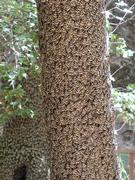
| When they say there are lots of butterflies there,
they really mean it. A little farther from the entrance to the
park, there was a thick covering of butterflies on every tree
close to the river. At that point I was actually relieved that
they were not flying around...
|
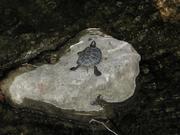
| This turtle was able to find one of the few butterfly-free
rocks in the river.
|
